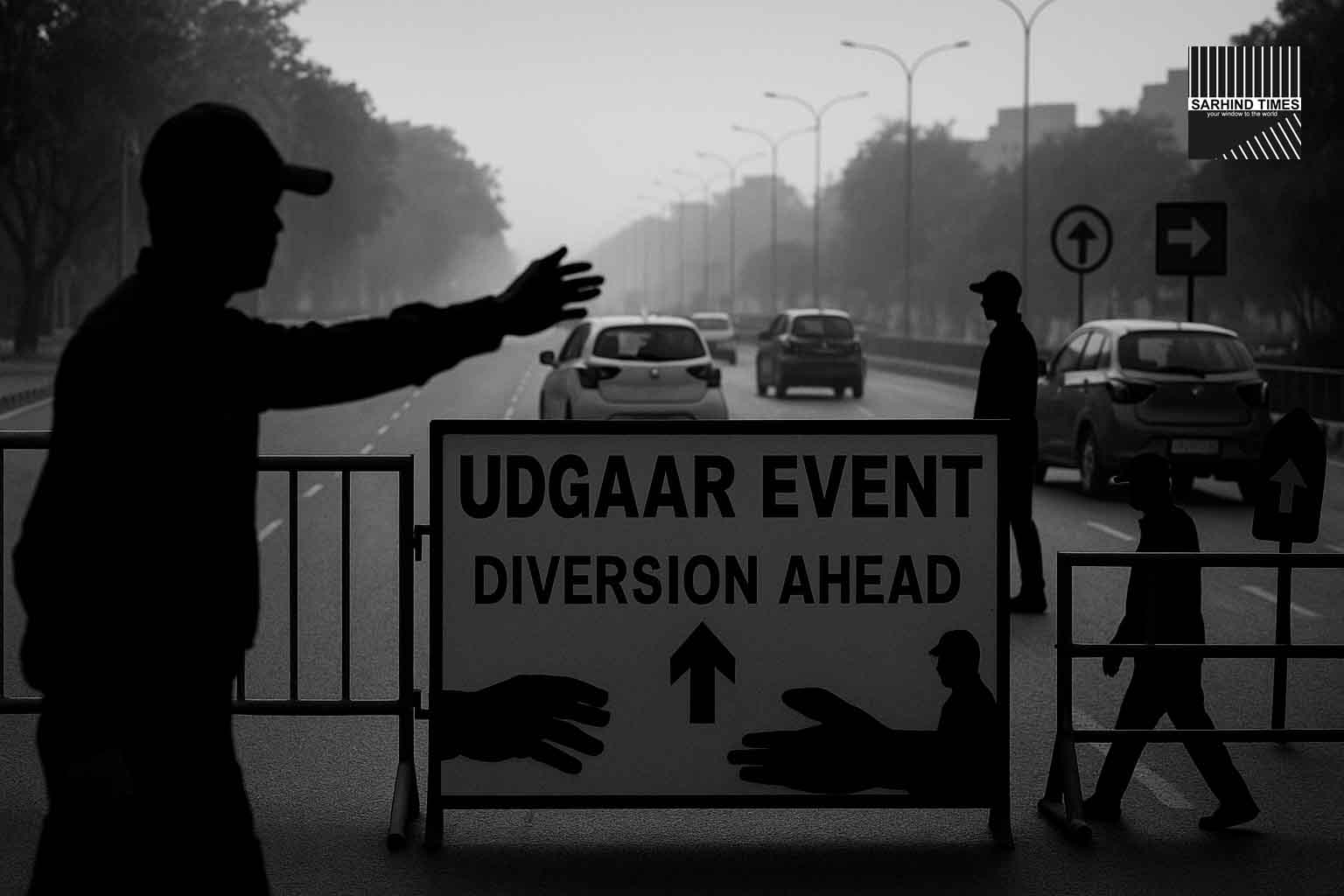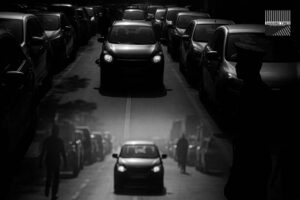New Delhi, October 12, 2025 — As Delhi readies for UDGAAR 2025, a major youth cultural festival at the Indira Gandhi Indoor Stadium, the city’s traffic authorities have rolled out a comprehensive advisory to manage congestion, road closures, diversions, and parking restrictions. The event, expected to draw large crowds, will disrupt traffic on I.P. Marg, Vikas Marg, parts of Ring Road, and adjacent sectors between 6 am and 7 pm. Commuters have been strongly urged to avoid the zone, rely on Delhi Metro or public transport, and use only designated parking areas. Ride-hail drivers servicing the Central Business District and New Delhi Railway Station have been alerted to plan alternate routes. Coordinated efforts involving traffic marshals, signage, volunteer deployment, and RWA liaison aim to streamline crowd movement amid a busy festive weekend.
While short-term planning is underway, the advisory also raises longer questions about urban mobility resilience in Delhi — especially when mega events collide with peak traffic loads.
What is UDGAAR 2025 & Why the Traffic Pressure?
UDGAAR 2025 — India’s Biggest Youth Cultural Festival (as per its official site) will take place on 12 October 2025 at IGI Stadium, Delhi. The event is billed to feature performances, youth showcases, cultural displays, and volunteer mobilization.
Because of its high expected turnout and location in a densely trafficked zone, the event exerts pressure on already congested arterial roads, especially when multiple other events, festive shopping, and regular commute traffic converge.
The Delhi Traffic Police posted on its official X account:
“TRAFFIC ADVISORY In connection with “UDGAAR-2025” SHASHAKT YUVA, SUVIKSIT BHARAT at Main Arena, Indira Gandhi Indoor Stadium on 12.10.2025 …
This suggests that the city is mobilizing for full-day traffic management.
Road Closures, Diversions & Parking Restrictions
Key Closures & Time Windows
- The advisory indicates that roads including I.P. Marg, Vikas Marg, and sections of Ring Road will see closures or restricted access during the day.
- No-parking zones will be enforced heavily, and vehicle movement may be blocked or diverted in stretches adjoining the stadium.
- The advisory’s time window is from 6:00 am to 7:00 pm — effectively a full day of traffic impact.
Diversion Routes & Alternate Paths
- Commuters are asked to avoid the stadium zone entirely and use alternate corridors.
- Ride-hail operators have been suggested to bypass internal routes — especially those close to the stadium — and use external arteries.
- Park & ride via Metro / public transport is strongly recommended, to reduce last-mile vehicle ingress.
Parking & Entry Arrangements
- Only designated parking areas will be permitted — unauthorized parking will be towed or restricted.
- Entry protocols are to be strictly followed; volunteers and signage will guide crowd flow to prevent spillover traffic into local lanes.
- Residents in adjacent colonies have demanded clear emergency exit routes; authorities say they are coordinating to ensure that local access is not unduly blocked.
Impacts, Challenges & Stakeholder Roles
Traffic Congestion & Delay Risks
- With major roads partially or fully blocked, commute times may increase sharply — especially for east-west or north-south cross-city flows that intersect I.P. Marg / Vikas Marg axes.
- Spillover from the event’s ingress / egress phases may cause ripple delays into nearby neighborhoods.
- Frequent traffic signals or turn conflicts near the stadium area can worsen gridlock during peak arrival and departure windows.
Public Transport & Modal Shift
- The advisory strongly encourages use of the Delhi Metro and public transport to avoid private vehicle pressure.
- Metro stations near the stadium (e.g. Dwarka Sector lines, possibly IGI / Phase corridors) will likely see surge footfall; last-mile connectivity (buses, feeders, walk paths) will be vital.
- If bus / feeder services are insufficient or overcrowded, some commuters may still risk driving — defeating the advisory’s goal.
First Responders & Emergency Access
- Critical that the advisory ensures clear lanes for ambulances, police, fire services — especially in local colonies near stadium roads.
- RWA liaison is crucial — residents must retain exit access; local driveway blockages must be minimized.
Signage, Marshals & Guidance
- Volunteers, traffic marshals, clear signage and real-time monitoring (e.g. via CCTV) will play a central role in managing crowd flows, smoothing turning movements, and preventing illegal detours.
- Dynamic guidance (e.g. “use alternate route,” lane switching) may be needed as congestion evolves.
Communication, Enforcement & Preparedness
- Timely real-time messaging via GPS apps, radio, social media will help commuters adapt.
- Enforcement teams (traffic police) must be deployed proactively, not just reactively, to ensure compliance and prevent rogue shortcuts.
- Contingency plans in case of overflow or unanticipated demand surges must be ready.
Coordination Among Agencies
- Multiple agencies must sync: Delhi Traffic Police, MCD, PWD, Stadium organizers, Metro authority, local RWAs / police.
- Parking authorities, local civic bodies need to ensure designated lots are usable, safe, and well signed.
- Metro, bus operators, feeder services must coordinate capacity increases around event times.
What Commuters & Residents Should Do
To mitigate personal inconvenience, commuters and residents should heed a few guidelines:
- Plan ahead — avoid the stadium zone if possible
Use alternate corridors or travel outside the advisory window. - Prefer public transport / Metro
Leave vehicles at Metro stations and use feeder or walking routes. - Park only in authorized lots
Don’t risk parking in residual lanes or unauthorized streets — they may be towed. - Follow signage, marshals, directed traffic
Don’t improvise or shortcut through restricted roads. - Allow extra buffer time
Expect delays before and after the event; factor precautionary buffer in your schedule. - Emergency routes awareness
Residents near stadium zones should know safe exit routes, avoid being boxed in during peak traffic. - Use traffic apps / alerts
Navigation apps that adjust for closures/diversions will help avoid bottlenecks. - Avoid peak ingress / egress windows
If your destination is elsewhere, avoid traveling close to the event’s start or end times.
Longer Reflections: Urban Mobility Under Event Load
Recurring Stress of Mega Events
Delhi frequently hosts large events (sports, political, cultural) in or near central corridors. Each time, pressure on roads, parking, public transport surges. Unless urban mobility systems are built for such load variability, such strain reveals fragility — not just on the day, but in policy and infrastructure design.
Resilience & Dynamic Capacity
Cities need flexible infrastructure — roads, parking, feeder linkages — that can scale on demand. Reserving contingency space (e.g. event parking, pop-up lanes, reversible flow lanes) is essential for mega events. Otherwise, the system buckles under load.
Parking & Demand Management
One of the core issues is parking demand when events and regular city use collide. Effective models include:
- Prepaid / reserved parking via apps to manage inflows
- Peripheral parking + shuttle / transit linkage
- Dynamic pricing to discourage long-stay in high-demand zones
- Shared parking agreements with nearby complexes (colleges, malls) during off-hours
- Enforcement of parking duration limits during event days
Multi-Modal Integration
To manage event loads, integration of metro, buses, last-mile micro-mobility, and walking is crucial. If even a modest fraction of attendees shift to public transit, road load eases significantly.
Data & Real-Time Adaptation
- Use traffic sensors, cameras, live data to dynamically adjust signals, open or close lane options, or re-route traffic proactively.
- Real-time advisory push to commuters (via app alerts) on route changes, delays, alternate path suggestions.
Urban Planning for Event Zones
Event precincts like stadiums must be embedded with mobility infrastructure — dedicated ingress/egress roads, parking capacity, pedestrian corridors, drop-off zones, and buffer capacity to absorb surges.
Institutional Memory & Post-Mortem Learning
After the event, traffic and transport authorities must analyze data: which routes choked, delays measured, compliance fidelity, gaps in signage or enforcement. That learning should feed future event planning, so each iteration improves.
Outlook & What to Watch
- Traffic flows at key junctions (I.P. Marg, Vikas Marg, Ring Road) in real time — whether delays exceed expectations.
- Metro ridership surge near stadium corridor — whether transit load absorption works as planned.
- Parking lot saturation — whether official lots fill early, pushing spill traffic.
- Emergency access continuity — if ambulances / essential services can still navigate around closures.
- Commuter feedback & incident reports — whether diversions are working or causing confusion.
- Post-event cleanup & reset time — how fast traffic normalcy returns after 7pm.
Conclusion
Delhi’s traffic advisory for UDGAAR 2025 is a necessary move to manage the intense demands of a city-scale event pressed into a congested urban fabric. But the advisory — road closures, diversions, parking restrictions and public transport emphasis — is only as effective as its execution, coordination, and commuter compliance.
The event day will test whether Delhi’s mobility systems, from enforcement to transit, have the muscle to absorb surges. More importantly, it underscores the need for urban resilience — adaptive traffic infrastructure, responsive public transport, parking intelligence, institutional coordination, and post-event learning loops.
If implemented well, UDGAAR’s traffic plan could become a reference blueprint for handling future large-scale gatherings in Delhi. If not, it becomes another day of gridlock, frustration, and avoidable breakdowns in urban mobility.
#DelhiTraffic #UDGAAR2025 #IGIStadium






















+ There are no comments
Add yours